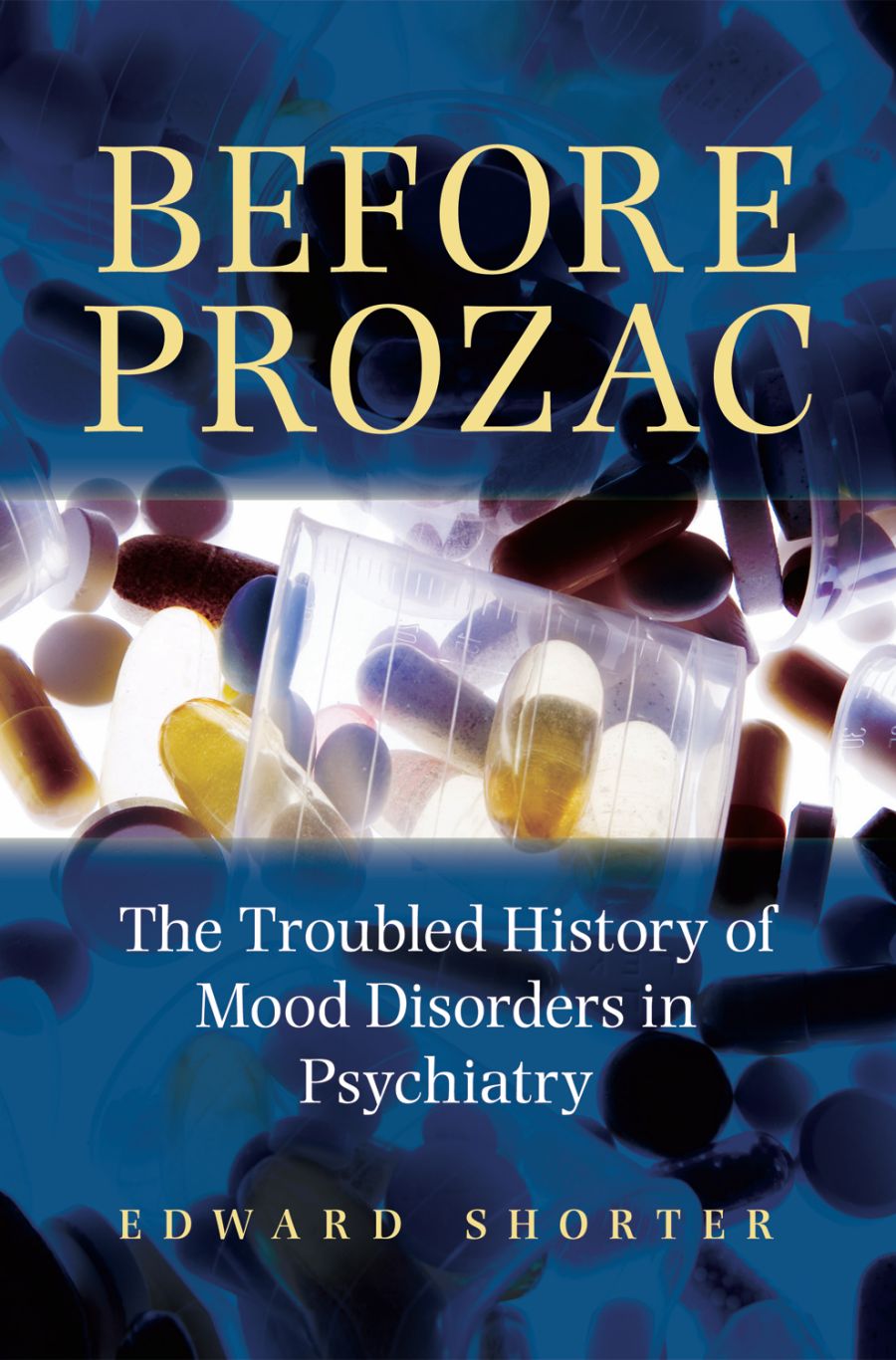By Edward Shorter
Ben Carey’s thought-provoking article in the New York Times about the treatment of personality disorders in the forthcoming fifth edition of the Diagnostic and Statistical Manual (DSM) of the American Psychiatric Association raises two questions:
1. Do disorders of “personality” really exist as natural phenomena, comparable to mania or dementia?
2. If they do exist, do they belong to the clinical specialty of psychiatry, or are they better considered characteristics of the human condition that have little to do with illness? Psychosis and melancholia are real illnesses, comparable to tuberculosis and mumps. Do personality disorders have that status?
Psychiatry’s involvement with personality disorders goes back to the early nineteenth century and the diagnosis of “hysteria”: the female character was considered weak and vulnerable. Women by virtue of their very personalities were deemed more vulnerable than men to feelings and emotional changability. Viennese psychiatry professor Ernst von Feuchtersleben wrote in 1845, “[The causes of] hysteria include everything that increases sensitivity, weakens spontaneity, gives predominance to the sexual sphere, and validates the feelings and drives associated with sexuality.”
In terms of the scientific assessment of personality and its breakdowns, this was not a promising beginning.
Things got worse. In 1888 German psychiatrist Julius Koch said there was such a thing as a personality that was “psychopathically inferior,” a product of genetic degeneration. Such degenerates were not exactly mentally ill, he said, merely unable to get their act together, and also showed “a pathological lack of reproductive drive.”
 So psychiatry has always thought there were people who had something really wrong with their characters without being necessarily depressed or psychotic. But how to classify them?
So psychiatry has always thought there were people who had something really wrong with their characters without being necessarily depressed or psychotic. But how to classify them?
Classification is obsessing the current debate. The struggle over what disorders to identify began with the great German classifier of disease (nosologist) Emil Kraepelin who, in the eighth edition of his Psychiatry textbook in 1915 expanded to seven types the list of “psychopathic personalities” with which he and his colleagues had been working. The list is interesting because it is very different from our own: the “excitable”; the irresolute; those driven by pleasure to seek out alochol, gambling, and who generally become wastrels; the eccentric; the liars and swindlers; and the quarrelsome, sometimes called the querulants.
Doesn’t sound very familiar, does it? That’s because each culture compiles a list of the personality traits it dislikes, or that are harmful to the further flourishing of things; and in Imperial Germany being querulous by challenging authority or being irresolute by not seeing France as the enemy were viewed as disorders.
There was lots yet to come, that I’m going to skip over. But what has most greatly influenced the current debate is the concept of personality disorders laid down by the psychoanalysts, the followers of Freud. Their list is quite different from Kraepelin’s because they were not interested in making war on France but on inner conflicts within the psyche. In 1908 Freud suggested the existence of an “anal” character, poeple who were orderly, tidy and meticulous and who in childhood had somehow come to dwell upon the anal region.
Freud’s followers came up with a whole list of character pathologies: Fritz Wittels’ “hysterical character,” Wilhelm Reich’s notion of “character armor” and its various guises, such as the “compulsive character,” the “phallic-narcissitic character,” and so forth.
We’re getting hot now. The modern concept of personality disorder comes directly to us from the psychoanalysts and from their current desperate desire to stay relevant. In 1938 Adolph Stern laid out a kind of personality disorder that was unresponsive to psychoanalysis, calling it “borderline personality disorder.”
Fourteen years later, in 1952, the American Psychiatric Association took a first cut at personality disorders, in its new DSM series, assigning them to three groups: (1) Those that were constitutional (inborn) in nature and unresponsive to change though psychotherapy, including “inadequate personality” and “paranoid personality”; (2) Those individuals with emotionally “unstable” and “passive aggressive” personalities; and (3) the sociopaths, such as the homosexuals, fetishists and other deviants.
American society in the early 1950s did not like those who deviated from the missionary position, who were inadequate to the challenges of empire-building, and who accepted authority but badmouthed it at the water-cooler.
Wilhelm Reich had laid out the concept of “narcicism” in 1933 and New York psychiatrist Heinz Kohut gave it pride of place in 1971. We are totally mired in the swamp of psychoanalysis here, a swamp that DSM-II in 1968 and DSM-III in 1980 failed to pull us out of, though DSM-III constructed an “axis II,” along which personality disorders could be arrayed, in addition to axis I for the real psychiatric disorders.
So this brings us to the current scene. The most recent edition of the DSM series, DSM-IV in 1994, had a whole slew of personality disorders, including histrionic, narcissistic, borderline, and so forth. The editor of DSM-IV, Allen Frances, was a psychoanalyst, and the list is a kind of last gasp. The problem is that patients who qualified for one, tended to qualify for almost all of them. The individual “disorders” were quite incapable of identifying individuals who had something psychiatrically wrong with them; the “disorders” had become labels for personality characteristics that are found in abundance in the population.
Moreover, who needed labels? Psychiatrists had a seat-of-the pants definition of a PD: “If your first impression of your patient is that he is an asshole, then he probably has a personality disorder.”
And what kind of disorder was this anyway, an illness in which the identified patient thinks he personally is fine but is making everyone around him unhappy? This is not like psychosis.
You can see why the drafters of DSM-V, due this May, have despaired. They wanted something clinically relevant and that also would sound vaguely like science (which psychoanalysis certainly didn’t). It will be interesting to see how the APA sorts this out. Personality disorders exist not as natural phenomena but as cultural phenomena: We as a society need some way of identifying people who can’t quite get it all together. But is this an illness that psychiatrists can treat? In the way that they treat schizophrenia with Zyprexa and depression with Prozac? What do we, as a society in 2012, do with people who can’t quite get it all together? I’m asking you.
Edward Shorter is an internationally-recognized historian of psychiatry and the author of numerous books, including A History of Psychiatry from the Era of the Asylum to the Age of Prozac (1997), Before Prozac (2009), and the forthcoming How Everyone Became Depressed: The Rise and Fall of the Nervous Breakdown. Shorter is the Jason A. Hannah Professor in the History of Medicine and a Professor of Psychiatry in the Faculty of Medicine, University of Toronto. Read his previous OUPblog posts.
Subscribe to the OUPblog via email or RSS.
Subscribe to only psychology articles on the OUPblog via email or RSS.
View more about this book on the ![]()
![]()
Image credit: Dissolving fractured head. Photo by morkeman, iStockphoto.




